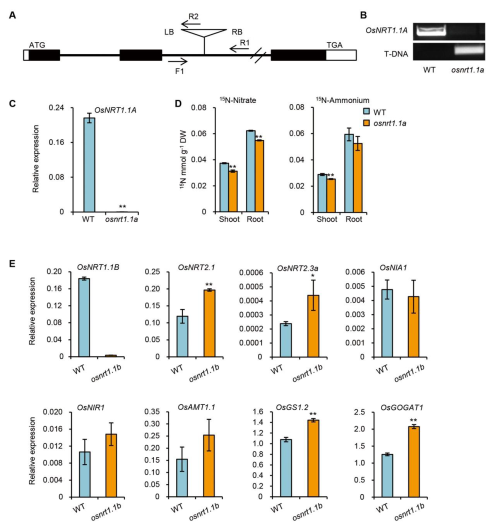中科院遗传发育所发现水稻氮高效利用关键基因
来源:Plant Cell
作者:储成才等
时间:2018-04-08

最近,中国科学院遗传与发育生物学研究所研究员储成才研究组在水稻氮高效利用领域的研究取得了新突破,该成果为培育兼具高产与早熟优点的水稻品种提供了解决方案,相关研究2月24日在线发表在《植物细胞》杂志中,并被该刊作为该期精品论文推送。
研究人员在前期前期研究硝酸盐转运蛋白基因的基础上,对其同源基因的功能进行了进一步探索。研究显示,这种同源基因主要定位于液泡膜,受铵盐诱导,参与水稻对细胞内硝酸盐及铵盐利用的调节。由于硝态氮和铵态氮是植物利用氮的两种主要形式,尤其铵态氮,是水稻的主要利用方式。因此该基因的这种功能分化对水稻环境适应性具有重要意义。
北京、长沙及海南等多年多点的田间试验表明,这种基因的过表达植株在高氮和低氮条件下均表现出显著的增产效果。尤其在低氮条件下,该基因过表达株系小区产量以及氮利用效率最高可提高至60%, 且在高氮条件下可提早开花2周以上,从而有效缩短了水稻成熟时间。该研究成果为培育兼具高产与早熟品种,克服农业生产中高肥导致的“贪青晚熟”问题提供了解决方案,具有巨大的应用潜力。
数年来,中科院遗传发育所及其所属三个国家重点实验室的水稻氮高效研究团队获得了系统性的重要成果,在国际相关领域引起了广泛关注。
据了解,氮元素是所有有机体的必需营养成分,氮肥的使用为作物增产起到了巨大的推动作用。但过度施用氮肥还会导致作物“贪青晚熟”,导致作物产量大幅降低。因此,提高作物氮肥利用效率同时避免“贪青晚熟”是作物氮利用改良研究中的重大科学问题。科学家过去几十年的研究对上述过程有了基本认识,但对调控氮代谢和氮利用的分子机理仍了解很少。(来源:科学网 丁佳)
Expression of the Nitrate Transporter Gene OsNRT1.1A/OsNPF6.3 Confers High Yield and Early Maturation in Rice
Abstract Nitrogen (N) is a major driving force for crop yield improvement, but application of high levels of N delays flowering, prolonging maturation and thus increasing the risk of yield losses. Therefore, traits that enable utilization of high levels of N without delaying maturation will be highly desirable for crop breeding. Here we show that OsNRT1.1A (OsNPF6.3), a member of the rice (Oryza sativa L.) nitrate transporter 1/peptide transporter family, is involved in regulating N utilization and flowering, providing a target to produce high yield and early maturation simultaneously. OsNRT.1A has functionally diverged from previously reported NRT1.1 genes in plants, and functions in up-regulating the expression of N utilization-related genes not only for nitrate but also for ammonium, as well as flowering-related genes. Relative to wild type, osnrt1.1a mutants exhibited reduced N utilization and late flowering. By contrast, overexpression of OsNRT1.1A in rice greatly improved N utilization and grain yield, and maturation time was also significantly shortened. These effects were further confirmed in different rice backgrounds and also in Arabidopsis thaliana. Our study paves a path for the use of a single gene to dramatically increase yield and shorten maturation time for crops, outcomes that promise to substantially increase world food security.
原文链接:http://www.plantcell.org/content/plantcell/early/2018/02/23/tpc.17.00809.full.pdf




